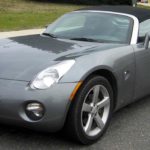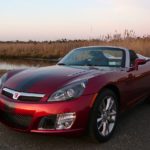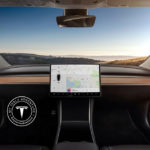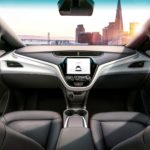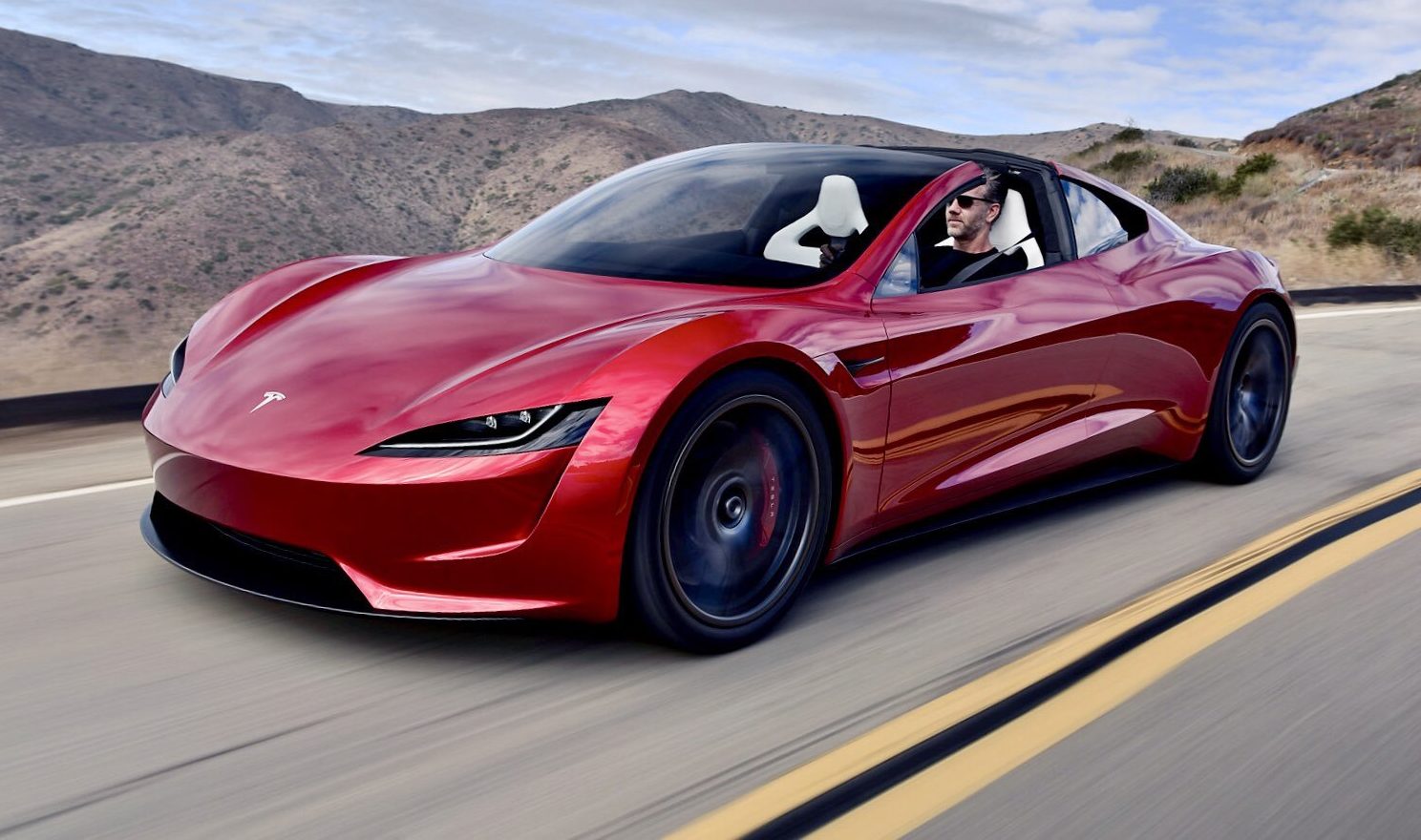
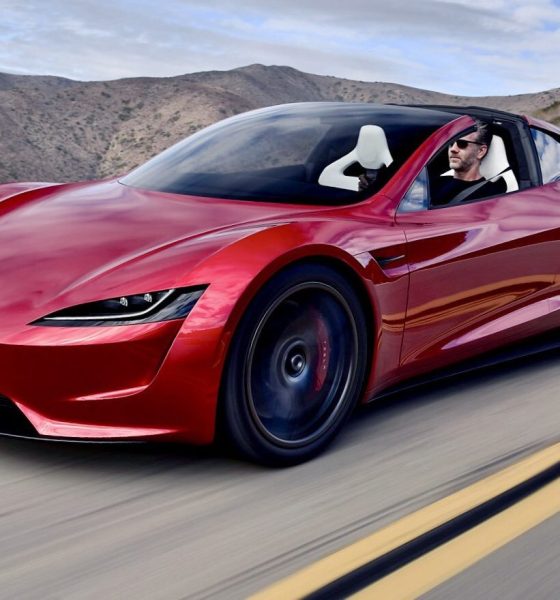
Lifestyle
Tesla’s Franz von Holzhausen joins list of Most Creative People in Business
Tesla’s Chief of Design Franz von Holzhausen was listed as one of Fast Company’s Most Creative People in Business for 2018. The publication listed von Holzhausen as No.6 in its list, directly behind the Parkland Five, teenage activists who triggered the March for Our Lives Movement. According to Fast Company, it awarded the designer a high rank in its list for repeatedly “redefining Tesla’s electric cars.”
In a statement to Fast Company, von Holzhausen described that the next-generation Roadster as a vehicle that can truly show the superiority of electric cars over gas-powered supercars.
“We want to show that an electric vehicle can be better than anything. Not just better than a normal road car, but better than any supercar,” he said.
Franz von Holzhausen started his work at Tesla back in 2008. During that time, Tesla Motors, as the company was named then, was only selling one vehicle — the original Tesla Roadster — an electric car that was based on the Lotus Elise. When he joined Tesla, von Holzhausen was actually taking a risk, considering that his credentials already included work on two of General Motors’ most attractive vehicles — the Pontiac Solstice and the Saturn Sky. Pictures of these cars can be found below.
- The Pontiac Solstice, a vehicle designed by Franz von Holzhausen.
- The Saturn Sky, a vehicle designed by Franz von Holzhausen.
After his stint at GM, von Holzhausen went on to Mazda North America, where he continued his work designing vehicles. Von Holzhausen could have easily stayed and made his career in Mazda then, considering that his work, especially in the company’s concept cars, was well-appreciated. That is, of course, until he met Elon Musk. Von Holzhausen joined Tesla in 2008, a time when the electric car company was quite literally on the verge of going under.
Franz von Holzhausen was presented with a unique opportunity at Tesla. The company knew that it had to move beyond the Roadster at some point, and efforts were underway to develop Whitestar, a full-sized luxury sedan that would be designed and built from the ground up as an electric vehicle. Von Holzhausen and his team worked at the SpaceX headquarters in Hawthorne, CA, designing the car from a blank slate. The results of these efforts was the Model S sedan.
The Model S is pretty much the embodiment of von Holzhausen’s signature style — cars that are understated, sleek, elegant, and efficient. The car designer’s aesthetic extended beyond the Model S’ exterior as well, as evidenced by the vehicle’s minimalistic, tech-driven interior. The Model S would go on to win numerous praises from reviewers and buyers. Consumer Reports even dubbed the vehicle as the best car it ever tested.
Franz von Holzhausen’s trademark design carried over to Tesla’s next two vehicles, the Model X and the Model 3 — a car that is expected to push the company into becoming a true mass-market automaker. The Model 3 is smaller than the Model S, but it is just as sleek and attractive. The interior of the vehicle is even more radical than the Model S and Model X, featuring a wooden dashboard that goes from one end of the car to another and a single, center-mounted 15-inch display.
- The Model 3 without its steering column. [Credit: My Tesla Adventure/Facebook]
- A driverless Chevy Bolt EV.
Ultimately, the Model 3’s interior design invokes a future when cars would do most, if not all, of the driving themselves. A simple side-by-side comparison of a driverless Model 3 and Chevy Bolt EV’s interior shows just how forward-thinking von Holzhausen’s designs are for the compact electric car.
Just like Tesla’s other executives like CTO JB Straubel, Franz von Holzhausen is known for being as understated as he is down-to-earth. Earlier this year, von Holzhausen was instrumental in giving a Tesla advocate who was fighting cancer a specialized, personal tour of the Fremont factory. Back in April, von Holzhausen also gave a would-be Model 3 owner a pleasant surprise by personally delivering the vehicle.

Lifestyle
Tesla Model S Plaid battles China’s 1500 hp monster Nurburgring monster, with surprising results
There is just something about Tesla’s tuning and refinement that makes raw specs seem not as game-changing.

The Tesla Model S Plaid has been around for some time. Today, it is no longer the world’s quickest four-door electric sedan, nor is it the most powerful. As per a recent video from motoring YouTube channel Carwow, however, it seems like the Model S Plaid is still more than a match for some of its newer and more powerful rivals.
The monster from China
The Xiaomi SU7 Ultra is nothing short of a monster. Just like the Model S Plaid, it features three motors. It also has 1,548 hp and 1,770 Nm of torque. It’s All Wheel Drive and weighs a hefty 2,360 kg. The vehicle, which costs just about the equivalent of £55,000, has been recorded setting an insane 7:04.957 at the Nurburgring, surpassing the previous record held by the Porsche Taycan Turbo GT.
For all intents and purposes, the Model S Plaid looked outgunned in Carwow’s test. The Model S Plaid is no slouch with its three motors that produce 1,020 hp and 1,420 Nm of torque. It’s also a bit lighter at 2,190 kg despite its larger size. However, as the Carwow host pointed out, the Model S Plaid holds a 7:25.231 record in the Nurburgring. Compared to the Xiaomi SU7 Ultra’s record, the Model S Plaid’s lap time is notably slower.
Real-world tests
As could be seen in Carwow’s drag races, however, Tesla’s tech wizardry with the Model S Plaid is still hard to beat. The two vehicles competed in nine races, and the older Model S Plaid actually beat its newer, more powerful counterpart from China several times. At one point in the race, the Xiaomi SU7 Ultra hit its power limit due to its battery’s temperature, but the Model S Plaid was still going strong.
The Model S Plaid was first teased five years ago, in September 2020 during Tesla’s Battery Day. Since then, cars like the Lucid Air Sapphire and the Xiaomi SU7 Ultra have been released, surpassing its specs. But just like the Model Y ended up being the better all-rounder compared to the BYD Sealion 7 and the MG IM6, there is just something about Tesla’s tuning and refinement that makes raw specs seem not as game-changing.
Check out Carwow’s Model S Plaid vs Xiaomi SU7 drag race video below.
Lifestyle
500-mile test proves why Tesla Model Y still humiliates rivals in Europe
On paper, the BYD Sealion 7 and MG IM6 promised standout capabilities against the Model Y.

BYD is seeing a lot of momentum in Europe, so much so that mainstream media has taken every opportunity to argue that the Chinese automaker has beaten Tesla in the region. But while BYD sales this year in Europe are rising and Tesla’s registrations remain challenged, the raw capabilities of vehicles like the Model Y are difficult to deny.
This was highlighted in a 500-mile challenge by What Car? magazine, which showed that the new Tesla Model Y is more efficient, cheaper to run, and more reliable than rivals like the BYD Sealion 7, and even the nearly 400 KW-charging MG IM6.
Range and charging promises
On paper, the BYD Sealion 7 and MG IM6 promised standout capabilities against the Model Y. The Sealion 7 had more estimated range and the IM6 promised significantly faster charging. When faced with real-world conditions, however, it was still the Model Y that proved superior.
During the 500-mile test, the BYD nearly failed to reach a charging stop, arriving with less range than its display projected, as noted in a CarUp report. MG fared better, but its charging speeds never reached its promised nearly-400 kW charging speed. Tesla’s Model Y, by comparison, managed energy calculations precisely and arrived at each stop without issue.
Tesla leads in areas that matter
Charging times from 25% to 80% showed that the MG was the fastest at 17 minutes, while Tesla and BYD were close at 28 and 29 minutes, respectively. Overall efficiency and cost told a different story, however. The Model Y consumed 19.4 kWh per 100 km, compared to 22.2 for MG and 23.9 for BYD. Over the full trip, Tesla’s charging costs totaled just £82 thanks to its supercharger network, far below BYD’s £130 and MG’s £119.
What Car? Magazine’s testers concluded that despite BYD’s rapid sales growth and the MG IM6’s seriously impressive charging speeds, Tesla remains the more compelling real-world choice. The Model Y just offers stability, efficiency, and a proven charging infrastructure through its Supercharging network. And as per the magazine’s hosts, the Model Y is even the cheapest car to own among the three that were tested.
Watch What Car? Magazine’s 500-mile test in the video below.
Lifestyle
Tesla Cybertruck slapped with world’s least intimidating ticket, and it’s pure cringe
One cannot help but cringe and feel second-hand embarrassment at the idea of a person just driving around with a stack of these babies.

A Cybertruck parked at Stanford Shopping Center in California was recently hit with what might be the most try-hard piece of paper ever slipped under a wiper blade: a “fake citation” accusing the driver of supporting a “fascist car.”
The note, shared on X by Tesla staff program manager Ryan Torres, quickly made the rounds on X, where it quickly gained attention as an example of how not to protest.
The world’s least intimidating ticket
According to the citation, the supposed “violation” was “driving a fascist car.” The remedial action? Take the bus, call an Uber, or ride a bike. The note also dubbed Elon Musk a “chainsaw-wielding Nazi billionaire.” Now, protests against Tesla and Elon Musk have become commonplace this year, but one cannot help but cringe and feel second-hand embarrassment at the idea of a person just driving around with a stack of fake anti-Tesla/Musk citations.
Torres pointed out the irony himself in his post on X. Tesla currently employs over 140,000 Americans, and SpaceX has put the U.S. firmly back at the top of space technology. As Torres put it, maybe the person behind the world’s least intimidating ticket should “read a book on innovation before vandalizing” other people’s property.
Peak performative clownery
Not to mention that the fake ticket’s logic collapses under its own weight. EVs like the Cybertruck are literally designed to reduce emissions, not “destroy the economy.” If anything, Tesla has bolstered the United States’ economy by fueling jobs in engineering, manufacturing, and clean energy. It’s not the first time a Tesla has been the target of vandalism or politically charged notes, but this one stands out for sheer cringe value.
Torres summed it up neatly: “Peak clownery.” On that point, at least, the citation earns full marks. In a way, though, perhaps cringe fake tickets are not as bad as the literal firebombs that were being thrown at Tesla stores and cars earlier this year because some critics were gleefully misinformed about Elon Musk.
